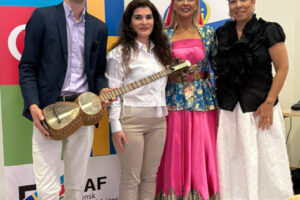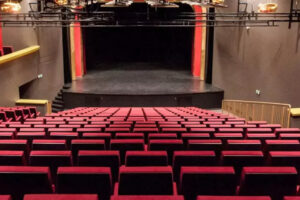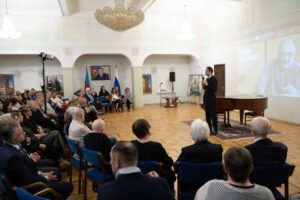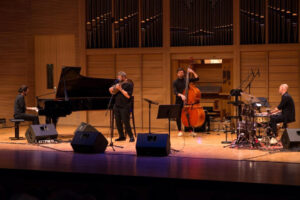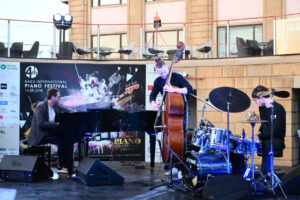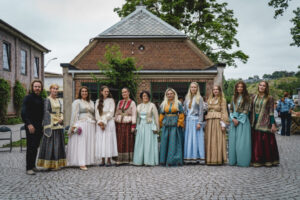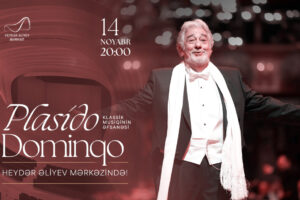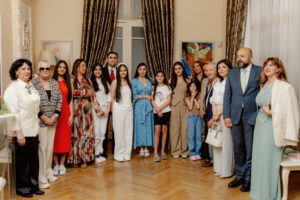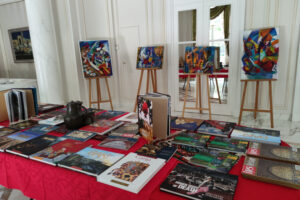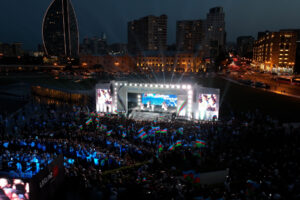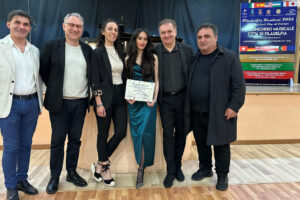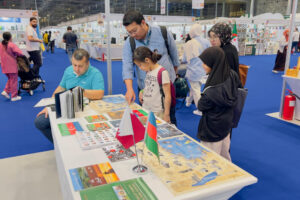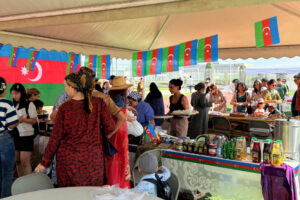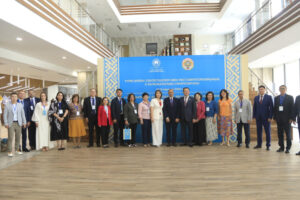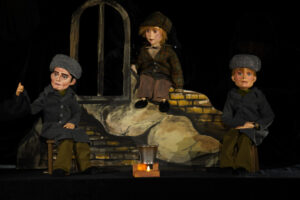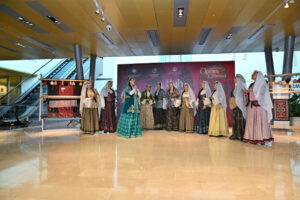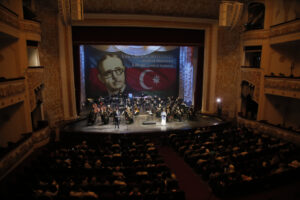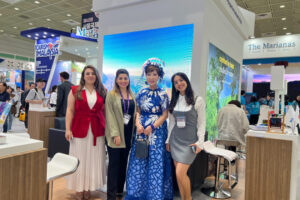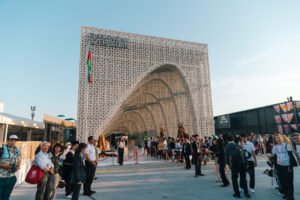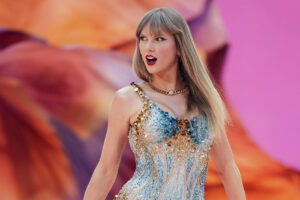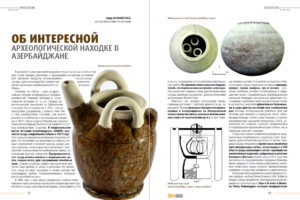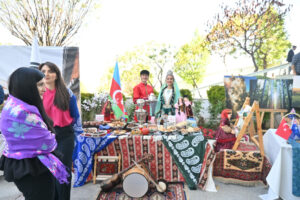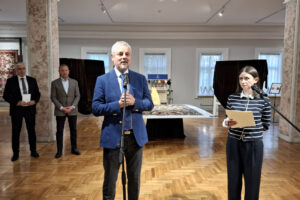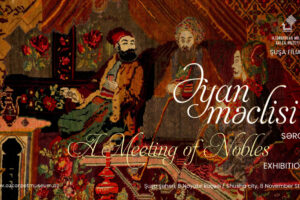Tokyo, 25 October, /AJMEDIA/
If Kyotographie founders Lucille Reyboz and Yusuke Nakanishi have a superpower, it’s the ability to select iconic locations in Kyoto for their festivals and transform them completely. Kyotographie, the photography festival they launched in 2013, has grown over the past 10 years to occupy ancient temples, secretive dojos, private homes and gallery spaces throughout the city for a fortnight each spring.
This year, the pair launched Kyotophonie, a biannual music festival to accompany Kyotographie, hoping to do for music what they did for photography — create an eclectic, undefinable event at unlikely locations around Japan’s old capital.
The first iteration in April and May featured an incongruous mix of musicians playing what might have been called “world music” a few decades ago. The highlights of the event were an acoustic performance by Malian singer-songwriter Salif Keita at Komyoin temple and various artists and DJs performing at Club Metro’s intimate basement space.
The fall edition, which took place Oct. 7 and 8, seemed to have a more cohesive vision, featuring a mix of earthy, soulful artists such as “Drive My Car” film composer and avant-garde pop artist Eiko Ishibashi, and reggae supergroup Inna De Yard, consisting of Horace Andy, Cedric Myton and Winston McAnuff, legends and elder statesmen of the genre.
In addition to the talent on hand, the location itself was a major attraction. Kyotophonie commandeered Amanohashidate (translated as Heaven’s Bridge), a sandbar located on Miyazu Bay in northern Kyoto Prefecture. Famed for having one of Japan’s three most beautiful views, the site is part of a national park and takes on the feel of a fancy campground, albeit one where a traveling bazaar of performers peddle mirth and magic.
The event divvied up the isthmus into two main locations: the Beach Stage, where the headliners and big bands performed with the natural backing track of waves upon the shore, and the Forest Stage, where artists with a more intimate sound played to an audience seated on low-slung wooden chairs or the forest floor.
Between the two stages was a solitary piano on the beach, where guests were free to create their own music. Nearby, a charming camera obscura tent run by photographer Ryosuke Toyama treated guests to an upside down view of the ocean scene; the piano players and passersby provided the characters for the vignettes, which were projected on the tent walls.
On the opposite shore, a minimalist skeleton of a bamboo tearoom called a Kian held sado (tea ceremony) for guests. The juxtaposition of an old-timey amusement tent, solitary seaside piano and barebones teahouse, complete with kimono-clad tea practitioners, lent an air of magic to the area between the two main stages.
Kyotophonie also bills itself as a gastronomy festival, and though that portion of the proceedings felt like an afterthought or an obligatory add-on in an age of “everything-for-everyone” events, the top chefs on hand served high-end fare for both diners with reservations and spontaneous festivalgoers alike.
Near the Beach Stage was a pop-up restaurant run by Rimpei Yoshikawa, the owner and chef behind the charcoal-fueled Shibuya restaurant Pignon, and his former sous chef Fumihiko Oumi, who is now the head chef at Delta, Kyotographie’s permanent space. Of course, natural wine expertly selected by wine importer Servin was also served at the eatery.
The gastronomy headliners, Michelin-starred chef Armand Arnal of La Chassagnette in Arles, France, and Masayo Funakoshi of the invite-only restaurant Farmoon in Kyoto, prepared an interpretation of Amanohashidate in a distinctive course menu with selected ingredients from the surrounding Tango region, at a price of ¥12,000 for lunch and ¥20,000 for a five-course dinner.
However, Kyotophonie is first and foremost a music festival, and its clever volley of staggered performances between the two main stages allowed attendees to see every act if they so desired, addressing a persistent problem at larger festivals, where fans are often forced to make a tough choice about who to see.
At the Forest Stage on Saturday, independent sibling musicians maika and Mirai Matsumoto, collectively known as Baobab, were joined by Naoya Wada on bass and Tsuyoshi Maeda on a taiko drum to create a folkish quartet. Their music offered a melodic, meditative awakening in the woods before the rousing percussions of Kavka Shishido on the Beach Stage. There, the drummer-turned-actress led her rhythm collective like an athletic orchestra conductor in a fully improvised performance.
The opening duties on the second day fell to Ichiko Aoba, an acoustic artist who took to the Beach Stage alone. Freshly returned from a North American tour, she played bossa nova and Bjork-inspired ballads to set the tone.
In fact, Icelandic singer Bjork seems to have influenced more than a few of the younger artists, including Irish and Japanese artist Julia Shortreed and her Black Boboi collaborator ermhoi. The latter joined Ishibashi and her impressive band on the Beach Stage, providing backing vocals and keyboard support alongside Ishibashi’s partner and collaborator Jim O’Rourke. Ishibashi stood out as a seasoned professional with real star power, offering a confident front-woman stage presence that might surprise those who know her only for her film score compositions.
The heavily-tattooed Kakushin Nishihara, an imposing and intense player of the satsuma biwa, a five-stringed Japanese lute, combined the instrument with classical vocal styles and aggressive electronic noise rock to shockingly original effect. Nishihara’s music is not for everyone and there were certainly a few confused smiles in the crowd as she finished.
In the evening of the second day, artist Daiho Soga of the live music performance collective Circo de Sastre wowed the audience with a wild set in front of a film of the band’s live show created by filmmaker Mitsusai Sekine. Playing at a feverish pace, Soga seemed to enter a trance-like state, more shaman than musician. He played his harmonica like a siren as he strummed his guitar, stepped on pedals and tweaked knobs, before finally swapping the guitar for an accordion. Throughout the performance, Soga shouted noises and recited mantras and spoken-word poetry in his husky baritone.
At times he used his harmonica and accordion to mimic anguished human wailing. He also made full use of the natural surroundings, ending his performance by cutting down the screen behind him and stomping through the enraptured crowd and off into the forest with the final notes of his instruments receding into the darkness.
Circo de Sastre’s genreless, experimental multimedia performance may have best defined the festival’s borderless ethos, defying simple description and offering something truly moving and original.
Daiho Soga of Circo de Sastre performs in front of a screen showing footage of the band’s live show created by filmmaker Mitsusai Sekine.
Daiho Soga of Circo de Sastre performs in front of a screen showing footage of the band’s live show created by filmmaker Mitsusai Sekine. | LANCE HENDERSTEIN
Brazilian music was well-represented at the festival, keeping the crowds dancing and smiling with funky upbeat sounds in the early afternoons of the two-day festival.
On day one, celebrated singer-songwriter, Chico Cesar brought his fun-loving Brazilian funk and socially conscious lyrics to Japan for the first time in 26 years. Also from Brazil’s northeast was Afro Brazilian singer-songwriter, Luedji Luna, who’s groovy neo-soul kept the audience nodding their head as she made her debut performance in Japan.
Kyotographie closed the weekend with a feel-good performance by Inna De Yard performing a medley of its greatest hits, with each artist performing one or two songs before tapping out to allow the next to take over. The stamina and energy of the men, all in their 60s and 70s, was as impressive as the music was uplifting and crowd-pleasing.
The international vibes were a fitting end to a well-curated edition that seemed to find a nice balance between Japan and the world, art and music, nature and cosmopolitanism, all while surrounded by the splendor of a beautiful setting.





